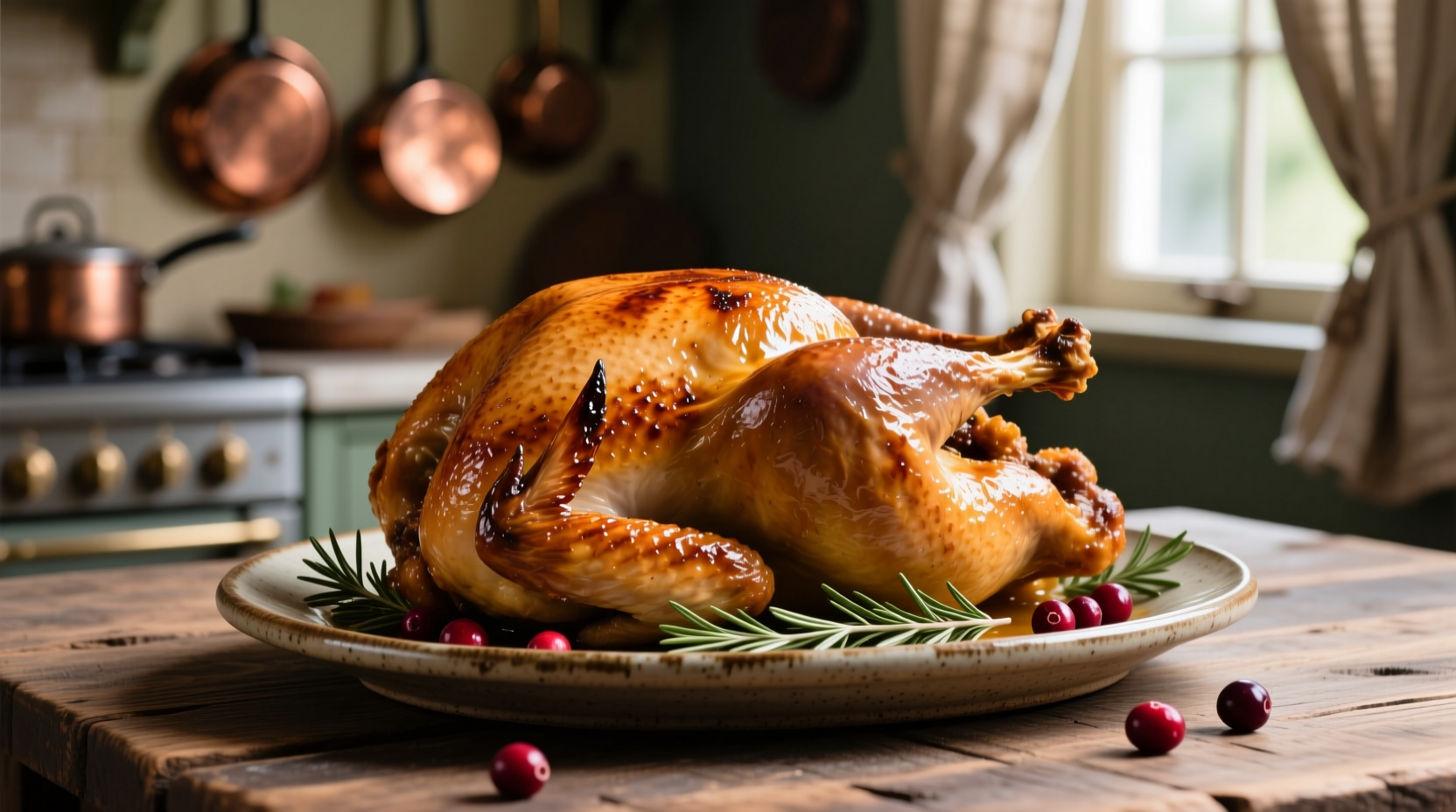Many home cooks panic when they realize Thanksgiving morning that their turkey remains frozen. Good news: the USDA Food Safety and Inspection Service confirms cooking a frozen turkey is not only safe but practical when done correctly. This comprehensive guide eliminates guesswork with science-backed methods used by professional chefs.
Why Cooking Frozen Turkey Works (When Done Right)
Cooking a frozen turkey follows the same food safety principles as thawed poultry, with extended time allowing heat to gradually penetrate the bird. The USDA's official guidelines state: "It is safe to cook turkeys from the frozen state. The cooking time will be approximately 50 percent longer than a fully thawed turkey."
| Cooking Method | Thawed Turkey Time | Frozen Turkey Time | Critical Difference |
|---|---|---|---|
| Conventional Oven (325°F) | 13 mins/lb | 22-25 mins/lb | Requires continuous temperature monitoring |
| Convection Oven | 10-12 mins/lb | 15-18 mins/lb | Reduce temperature by 25°F |
| Grilling/Indirect Heat | 15 mins/lb | Not recommended | Uneven heating risks dangerous zones |
Essential Equipment Checklist
- Heavy-duty roasting pan with rack (avoid disposable pans)
- Digital probe thermometer with remote monitoring
- Aluminum foil (for strategic shielding)
- Basting brush (silicone recommended)
- Meat thermometer (backup)
Step-by-Step Frozen Turkey Cooking Protocol
Preparation Phase (5 Minutes)
Remove all packaging but keep the plastic giblet holder intact—this prevents contamination during cooking. Pat the frozen turkey's exterior with paper towels; moisture on the surface causes steaming rather than browning. Season only the outermost layer since spices won't penetrate frozen meat.
Cooking Process Timeline
Cooking duration depends on your turkey's exact weight. Use this verified timeline based on USDA data:
- 8-12 lb turkey: 4.5-6 hours (vs 3-4 hours thawed)
- 12-16 lb turkey: 6-8 hours (vs 4-5.5 hours thawed)
- 16-20 lb turkey: 8-10 hours (vs 5.5-7 hours thawed)
Insert thermometers immediately: one in the thickest breast area, another in the innermost thigh. Set alarms for 160°F in both locations—this accounts for 5°F carryover cooking to reach the safe 165°F endpoint.
Critical Temperature Monitoring Points
- At 75°F internal temp: Shield wingtips with foil to prevent burning
- At 130°F internal temp: Baste with broth (not butter) to add moisture
- At 150°F internal temp: Check hourly—critical danger zone ends here
- At 160°F internal temp: Remove from oven for resting
When NOT to Cook a Frozen Turkey
This method has specific limitations you must recognize for safety:
- Butterflied or spatchcocked turkeys: Uneven thickness creates dangerous cold spots
- Turkeys with pre-injected solutions: Extended cooking may cause texture issues
- Grill or deep-fry methods: Impossible to maintain safe temperature gradients
- Turkeys frozen for over 1 year: Quality degradation affects safety margins
Troubleshooting Common Issues
Breast Overcooking Before Thighs Reach Temperature
Create a foil tent over the breast when it reaches 140°F internal temperature. The foil reflects radiant heat while allowing convection currents to continue cooking the legs. This technique, validated by America's Test Kitchen research, balances cooking by 25-30 minutes.
Unexpected Power Outage During Cooking
If power fails when the turkey is between 40-140°F internally:
- Keep oven door closed (retains heat for 30-45 minutes)
- Transfer to a cooler with hot water bottles if outage exceeds 30 minutes
- Discard if internal temperature remains in danger zone for over 2 hours
Resting and Carving Protocol
Rest frozen-cooked turkeys 25-30 minutes (5 minutes longer than thawed birds) to allow temperature equalization. The extended cooking creates more denatured proteins that require additional time to reabsorb juices. Carve immediately after resting—delaying causes moisture loss from the prolonged cooking process.

Pro Chef's Final Tips
"I've cooked hundreds of frozen turkeys for last-minute catering emergencies," says Antonio Rodriguez, culinary specialist. "The key is trusting your thermometer over the clock. I've seen 14-pound birds finish in 7 hours while others needed 8 hours 20 minutes—your oven's calibration and the turkey's exact starting temperature create variables no chart can predict."
Can I stuff a frozen turkey before cooking?
No. Stuffing a frozen turkey creates dangerous food safety risks. The extended cooking time means the stuffing remains in the temperature danger zone (40-140°F) for too long, potentially allowing harmful bacteria growth. Cook stuffing separately for safety.
Why does my frozen turkey cook faster than the USDA chart indicates?
Your oven's actual temperature may differ from the set point. Most home ovens run 15-25°F hotter than displayed. Always verify with an independent oven thermometer. Convection settings also reduce cooking time by 20-30% compared to conventional baking.
How do I prevent the skin from burning during extended cooking?
Shield wingtips and breast with foil when internal temperature reaches 75°F. Remove foil during the last 90 minutes of cooking. Baste with low-sodium broth instead of butter—fat causes faster browning at extended temperatures.
Can I use a frozen turkey that's been stored for 2 years?
The USDA recommends freezing turkeys for no longer than 1 year for best quality and safety. While technically safe indefinitely when frozen at 0°F, quality degradation after 12 months increases the risk of freezer burn and texture issues that complicate safe cooking.











 浙公网安备
33010002000092号
浙公网安备
33010002000092号 浙B2-20120091-4
浙B2-20120091-4